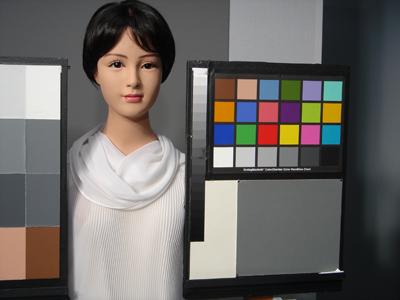“According to Jan Kasoff, an NBC colour-television cameraman on the program Saturday Night Live, […] “a good VCR person will have a colour girl stand in front of the cameras and stay there while the technicians focus on her flesh tones to do their fine adjustments to balance the cameras. This colour girl is always white.” (Jan Kasoff, former Cameraman, NBC, New York, NY, personal communication, November 20, 1994)
The “colour girl” described above is also known as “Shirley.” For this reason, the colour reference cards that typically depict a woman (or, more recently, women) are still referred to as Shirley cards. In her work, Roth explains how, until recently, there has been a light-skin bias embedded in colour film stock emulsions and digital camera designs.
Due to this colour bias, rendering non-Caucasian skin tones was difficult to do well and required various technical compensations. However, more recently, “Shirley” has been adjusted and diversified…
– Lorna Roth. Forthcoming, 2012. “Surely, Shirley is no Longer the Ultimate Norm!?” Postscript to “Looking at Shirley, the Ultimate Norm, in Ronald E. Hall, Ed. The Melanin Millennium. Springer Publications.
– Lorna Roth. April, 2009. “Looking at Shirley, the Ultimate Norm: Colour Balance, Image Technologies, and Cognitive Equity,” in Canadian Journal of Communication. Vol. 34, No. 1, 2009: 111 – 136.

